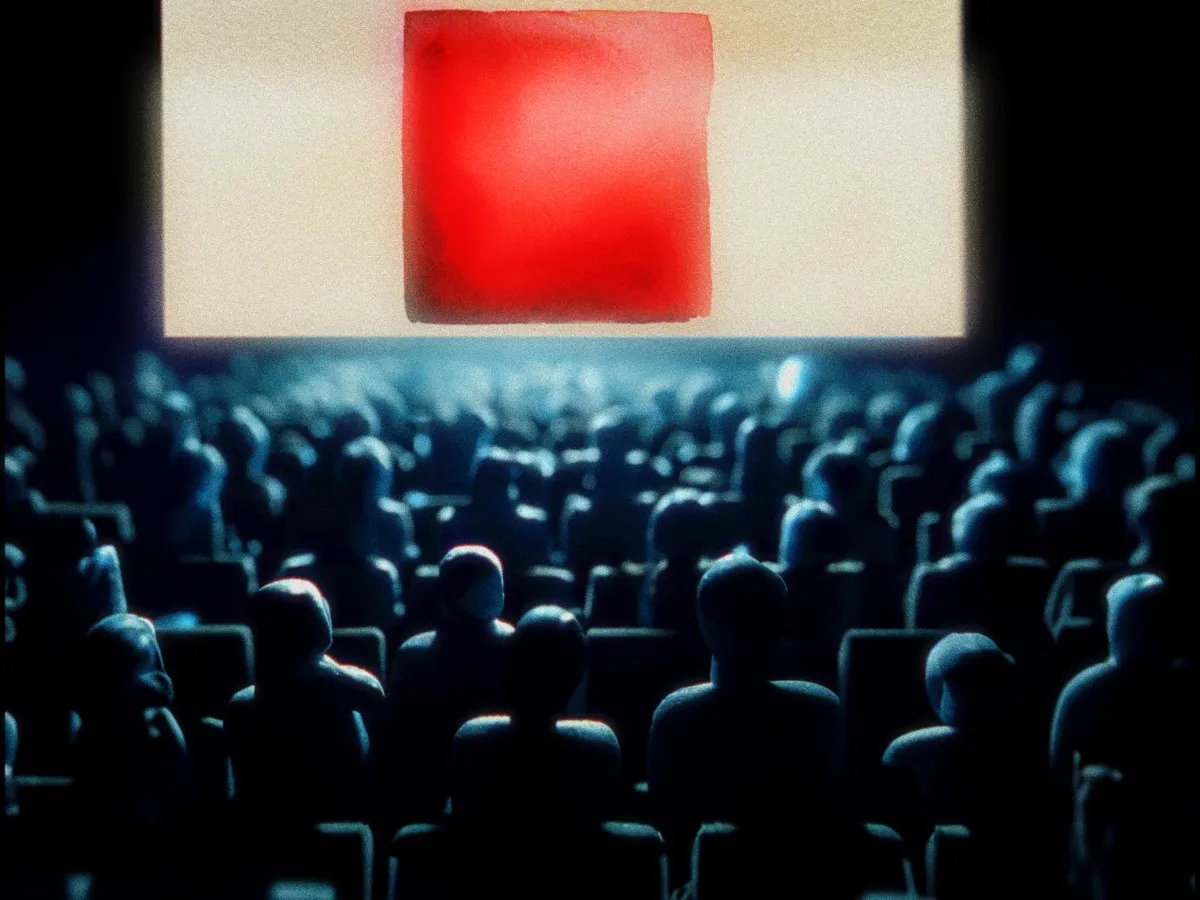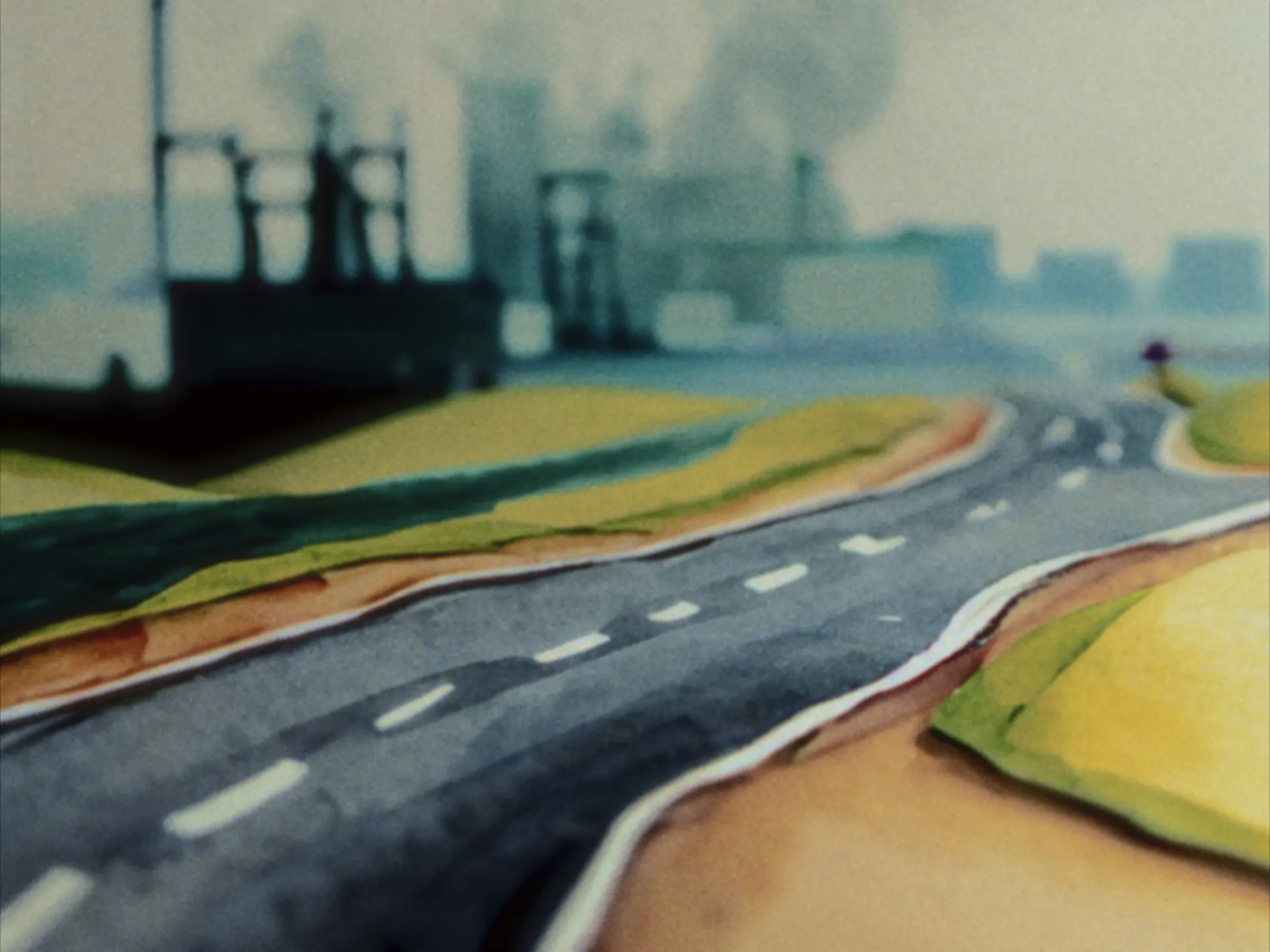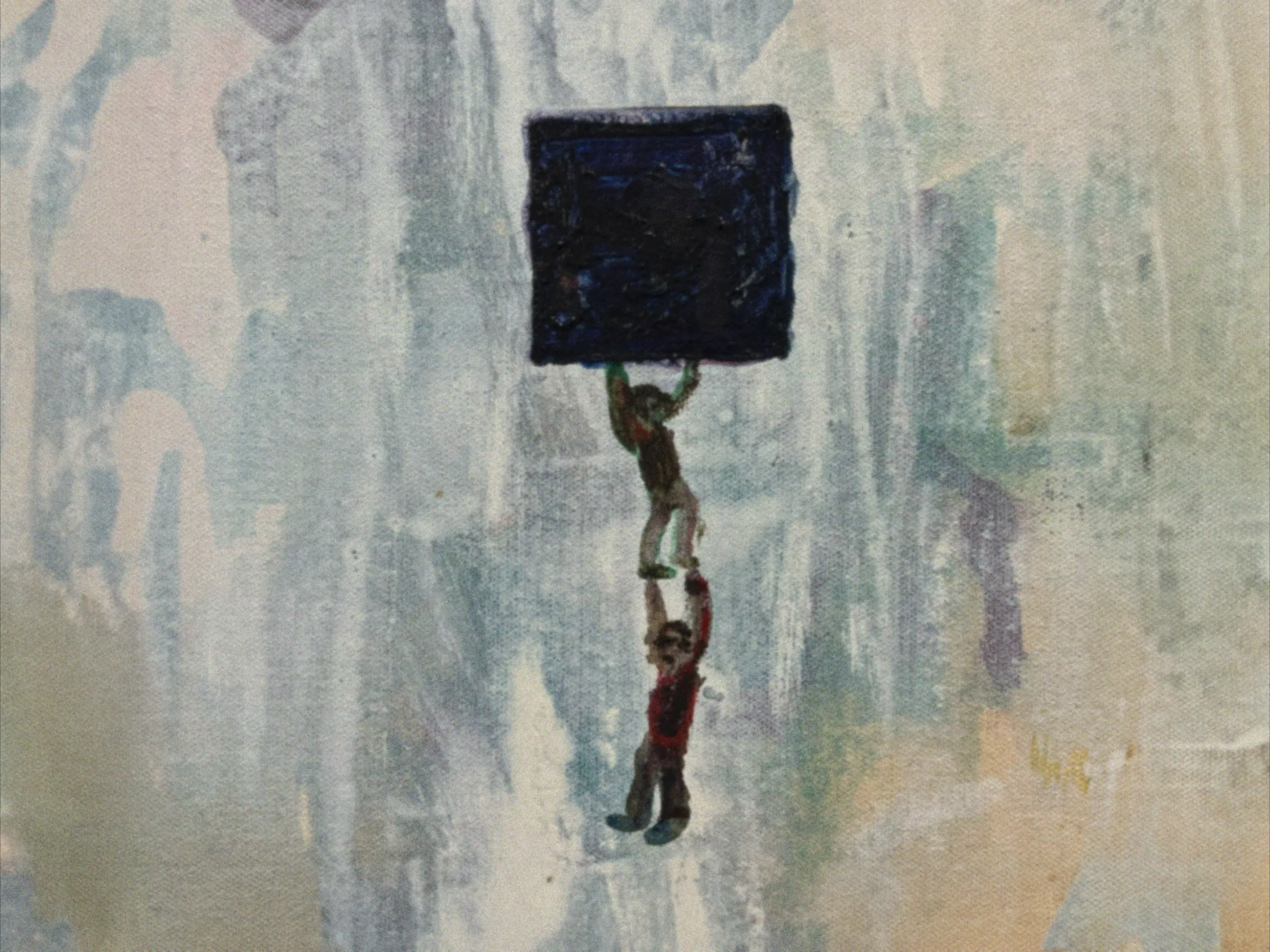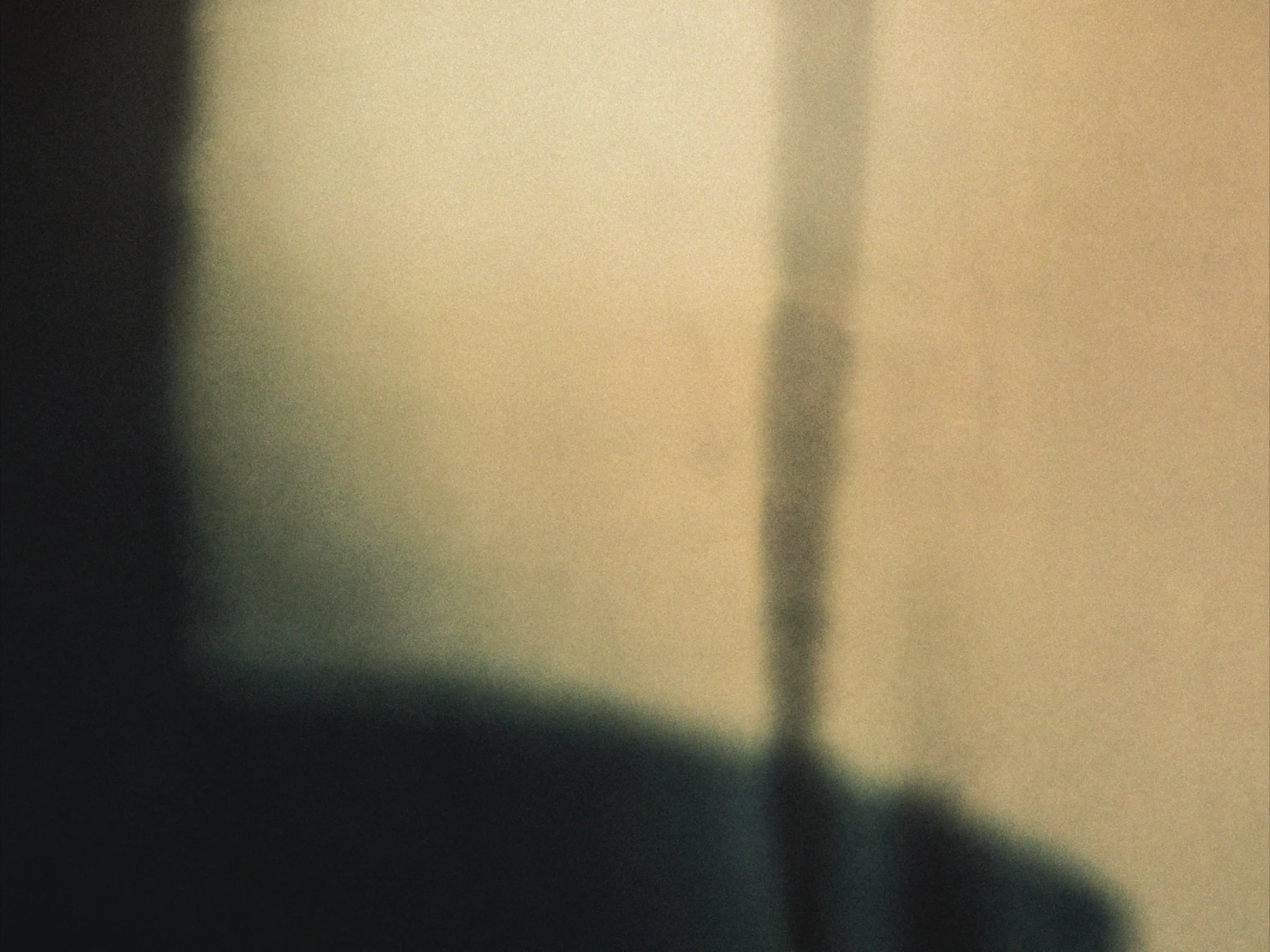
The Perfect Square
Gernot Wieland’s film, The Perfect Square, opens onto a soft, grainy blue sky, punctuated by the appearance and disappearance of birds who are lost into the film grain each time the camera operator fails to focus the lens on the subject.
In the film, Wieland states that he collaborated for over twelve years with a bird trainer who attempts to teach birds to fly in a circle, in order to be captured by the film camera. The results are a series of commands and resistances that reveal an apparatus of otherness.
The volatile quality of trying to capture flying birds in frame intensifies the desire to confirm whether the birds indeed fly in a circle. The otherness of the birds here enters into an ontology of seeming by setting the birds into an indeterminate space between the domestic and wild. It is another instance of a gap Wieland uses to bring not the qualities of the birds themselves to the fore, but instead the desire to command them, to instrumentalize them toward human goals or ends, to categorize them either as ‘useful’ because they can be trained, or ‘beautiful’ if they can trace the pure geometry of a circle.
Whereas the indexical image captured by the camera is a testament to the difficulty of training the birds to do something on command (and to thereby change the status of ‘the real’), the title of the work itself invokes the intellectual purity of geometric forms that have been deemed superior by analytic philosophy to describe the laws of nature since the so-called Enlightenment.
All this is to say, the being or creature that won’t obey a command, program, or desire could be a working definition of an “other”, or otherness, an “other” who approaches a you – an Other I.
The film further examines an experimental survey that was conducted by Wassily Kandinsky and his students at the Bauhaus Weimar in 1923. In his theoretical writings on art, Kandinsky had assumed there to be direct correspondences between basic colors (yellow, red, blue) and forms (triangle, square, circle).
It is by these means that The Perfect Square explores the question of how aesthetic and social norms influence and control our society and our artistic creation, and our (Western) view of the world. — Maxwell Stephens
Register (FL//080)
The Perfect Square
Gernot Wieland
2024
1/5+2
1 channel video, color video, stereo audio
3840px x 2160px, 8'01"




